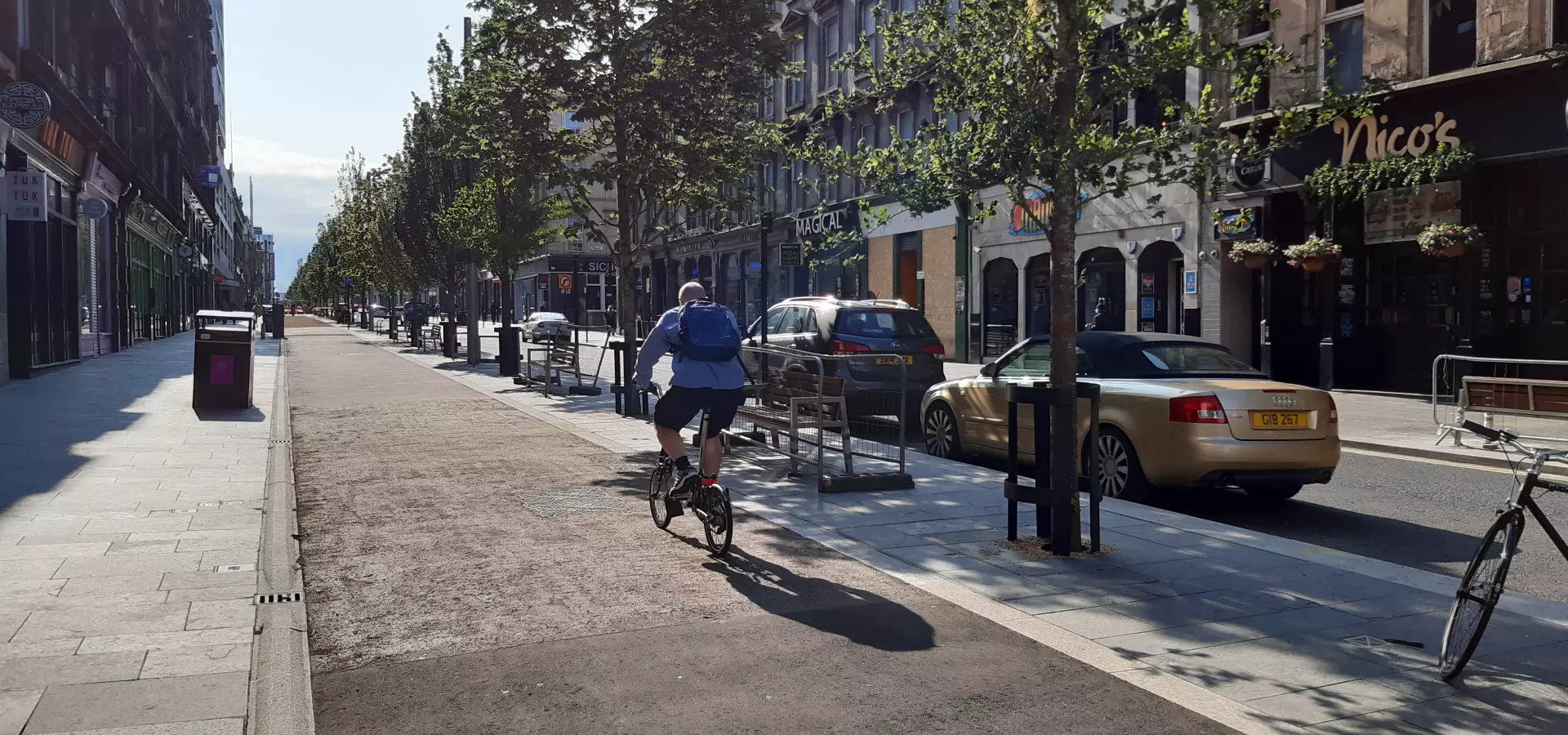
Cycling levels and COVID
The co-benefits of active travel are well documented and recognised and include improving health, supporting a shift away from private car use to more sustainable transport systems, reducing emissions and improving liveability and places. Many countries, including Scotland, now have policy aims and associated investment to increase levels of active travel across the population.
So what sort of conditions can encourage and promote this and are there any lessons to be learnt from the COVID-19 periods of ‘lockdown’?
In this study, we looked at the early phase of the pandemic to examine the impact of COVID-19 work and travel restrictions on cycling levels across Scotland. Using cycle counter data from across Scotland we analysed trends in cycling from the pre-pandemic period through the first four months of the pandemic from mid-March to early August 2020.
Following an initial sharp reduction in cycling in the first few days of lockdown there was a large increase in cycling in the initial lockdown phase on all routes, but particularly on leisure routes. Better weather and COVID-related restrictions were independently associated with increases in cycling. In most of this period, particularly in April and May 2020, the weather in Scotland was dry and sunny which encouraged more people to cycle but there was also the added impact of the restrictions. Cycling levels rose when there was less motorised traffic on the roads and people had more opportunities to travel and exercise locally. As COVID restrictions were relaxed, accompanied by more cars on the roads, levels of cycling reduced. Cycling on commuting routes was much less affected by these relaxations and by weather effects. This is likely to be because commuting cyclists are more likely to cycle in all types of weather and during the pandemic cycling was never proscribed in the way that other methods of transport were at different stages of the COVID restrictions.
This study shows that given the right conditions more people will choose to cycle. The lessons from the pandemic period can help in making the transition to a low-carbon, active and sustainable transport system.
Reflecting on the research, Bruce Whyte, Public Health Programme Manager at GCPH and lead author of the paper stated:
That many more people in Scotland cycled in the spring of 2020, when Scotland was in lockdown and the weather was fine, is unsurprising. However, what is interesting is the strong impact COVID restrictions had on cycling, independent of the weather – when restrictions were tightest and many people were working from home or furloughed and there was little motorised traffic on the roads, leisure cycling rose dramatically.
The lessons from this period are that when the conditions are right, and it feels safe to do so, more people will choose to cycle in Scotland. To encourage more people to cycle regularly, we need to create a network of safe segregated cycle routes and we also need to reduce road speeds and motorised traffic in our towns and cities.